As an Amazon Associate, I earn from qualifying purchases.
Paddleboarding, also known as stand-up paddleboarding (SUP), has gained the utmost attention immense reputation, and popularity worldwide. It’s a thrilling activity that combines balance, strength, and a love for the water. Many beginners wonder, “Is paddle boarding hard?” This comprehensive guide will address this question, breaking down every aspect to make your paddle-boarding experience easy and enjoyable.
What Makes Paddle Boarding Seem Difficult?
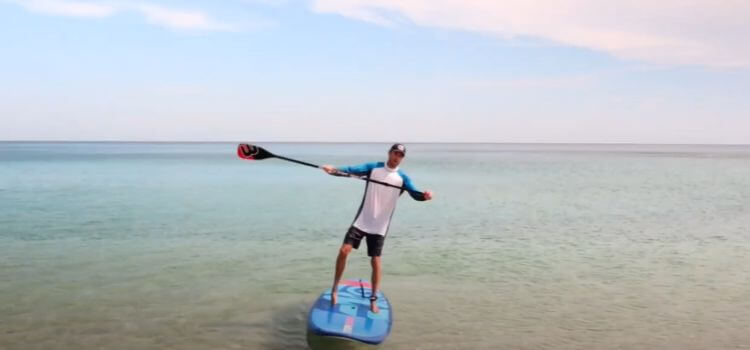
For those new to the sport, paddle boarding might initially seem challenging. Here’s why:
Balance Requirements: Paddle boarding requires maintaining balance on a moving surface, which can be daunting for beginners. The fear of falling off is natural but can be overcome with practice.
Coordination of Paddling and Balance: Beginners need to coordinate paddling strokes with their balance. Without proper technique, you may feel wobbly, leading to quick fatigue.
Water Conditions: Calm water is beginner-friendly, but strong currents or waves can make paddle boarding more difficult. Windy conditions can also increase resistance and reduce maneuverability.
Equipment Choice: Using the wrong type of paddleboard, such as one that’s too narrow or short, can add to the difficulty. The choice of the paddle also matters for maintaining efficient strokes.
Why Paddle Boarding So Isn’t As Hard As From Your Considerations

Though it may seem intimidating at first glance, paddle boarding is relatively easy to master, especially for beginners who follow the right steps.
Accessible to All Ages: Paddle boarding is one of the most crucial and popular beginner-friendly water sports. Individuals of all ages and fitness levels can be significantly memorable and enjoyable with the right guidance and equipment.
Fast Learning Curve: Most people can stand up and paddle within the first 30 minutes of trying. It’s about getting comfortable with the balance and paddling technique.
Low-Impact Workout: Unlike high-intensity sports, SUP provides a low-impact workout that’s easy on your joints, making it suitable even for people with injuries or mobility issues.
Essential Most Popular Tips to Make Paddle Boarding Easier
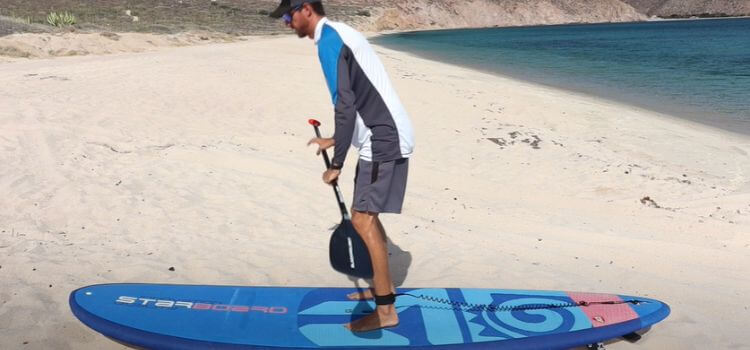
Selecting the Right Essential Paddle Board for Beginners
Your paddle board’s size, shape, and volume significantly impact your stability and ease of use. For beginners:
Wider Boards: Opt for a paddle board that is at least 32 inches wide for added stability.
Longer Boards: Boards longer than 10 feet provide better tracking, making it easier to glide straight.
Thicker Boards: Boards that are 5 to 6 inches thick offer better buoyancy, keeping you stable on the water.
Master the Basics of Standing Up
Standing up on your paddle board can be the hardest part for beginners, but with these steps, you’ll find it much easier:
The most essential start is in a kneeling position with your hands on the paddle.
Place your feet where your knees are, shoulder-width apart.
The most common crucial requirement gradually rise to a standing position, keeping your knees significantly slightly bent.
Keep your eyes on the detailed utmost attention horizon to help with balance.
Perfect Your Paddle Stroke
Proper paddling technique is essential for conserving energy and maintaining control. Follow these guidelines:
Grip the Paddle Correctly: Place one hand on the top of the paddle and the other hand insight into the midway down the shaft.
Use Full Body Power: Engage your core and use your whole body, not just your arms, to pull the paddle through the water.
Maintain Smooth Strokes: Avoid splashing and focus on making long, smooth strokes.
Practice in Calm Water First
For your first few paddle-boarding experiences, stick to flat and calm waters like lakes or bays. Avoid strong currents, waves, or windy conditions until you’re more comfortable on the board.
Common Paddle Boarding Mistakes to Avoid
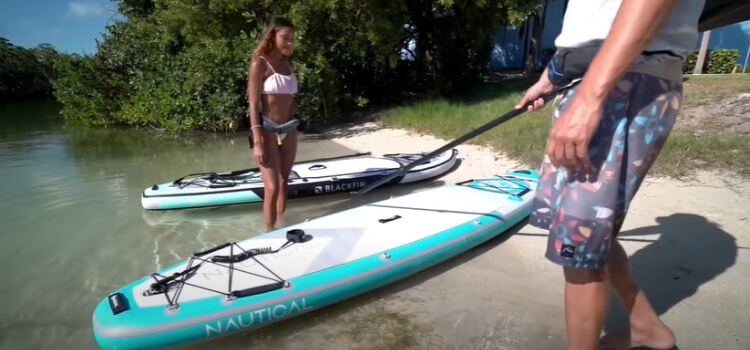
Beginners often make a few common mistakes that can more significantly make the sport harder than it needs to be. Here’s what to watch out for:
Looking Down: Always keep your eyes looking ahead, not at your feet. This will significantly help maintain balance and prevent falls.
Tense Legs: Stiff, locked legs are a recipe for instability. Keep your knees flexible soft and particularly slightly bent to absorb the movement of the water.
Wrong Paddle Orientation: Ensure the angle of the paddle blade is facing away from you, which will help create more powerful strokes.
Standing Too Far Back: Center your weight in the middle of the board. Standing too far back will cause the board’s nose to rise, making it harder to steer.
Health Benefits of Paddle Boarding

Paddle boarding is not only a fun recreational activity but also a fantastic full-body workout. Here’s why you should make it part of your regular fitness routine:
Core Strength: Balancing on the board and paddling engages your core muscles, helping to build insight into strength and stability.
Cardio Workout: Paddleboarding at a steady pace raises your heart rate, offering a cardiovascular workout that improves stamina.
Improves Balance: Regular practice enhances your balance, which translates to better posture and coordination in everyday life.
Stress Relief: Being on the water, surrounded by nature, helps to properly reduce stress levels, significantly improve mental clarity, and particularly promote a sense of well-being.
Particularly How to Overcome the Fear of Falling
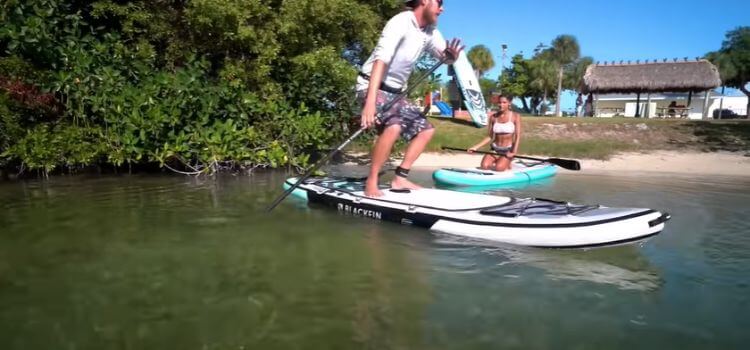
Falling off the paddleboard is a natural part of and how to do it properly provides a detailed insight into the learning process. Here’s how to deal the most particularly with it:
Learn to Fall Safely: Fall a few away from the board to particularly avoid injury. The water will cushion your fall, so don’t be afraid of getting wet.
Use a Leash: It’s a unique challenge to always wear a leash attached to your board. This ensures your board stays close to you, even if you fall off.
Stay Calm: If you fully fall on the water, it is crucial concern stay calm and use your paddle to help you climb back onto the board.
Advanced Paddle Boarding: Pushing Your Limits
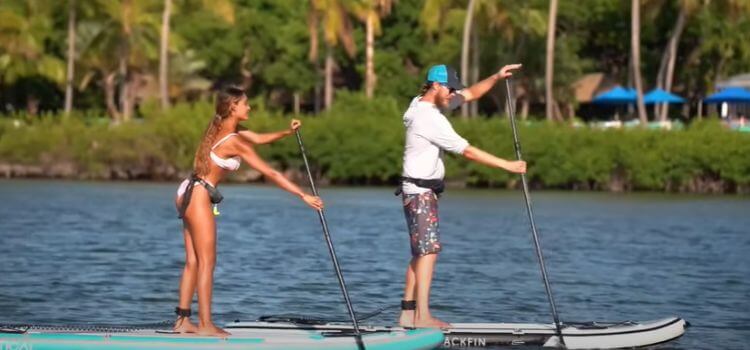
Once you’ve mastered the basics, you can try these advanced techniques to elevate your paddle-boarding experience:
SUP Yoga: Challenge your balance by practicing yoga poses on your board.
SUP Surfing: For thrill-seekers, paddle board surfing in small waves adds an exciting dimension to the sport.
Long-Distance Paddling: Explore different water routes and cover greater distances for an endurance workout.
Final Thought
With the right mindset, equipment, and basic techniques, paddle boarding is achievable and incredibly rewarding. By starting in calm conditions, using a stable board, and following the tips outlined in this guide, you’ll paddle confidently in no time. It’s a fun, accessible sport with numerous physical and mental health benefits—so grab your board and hit the water.
As an Amazon Associate, I earn from qualifying purchases.
Leave a Reply